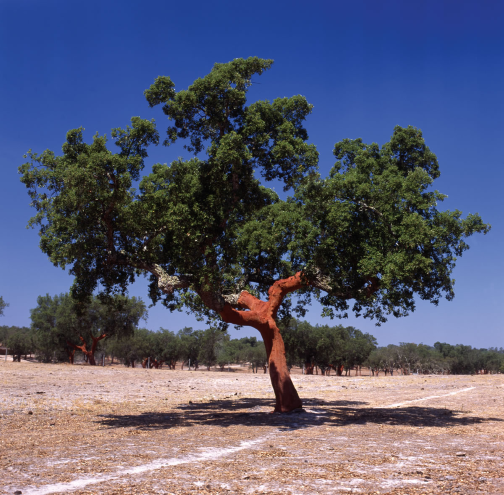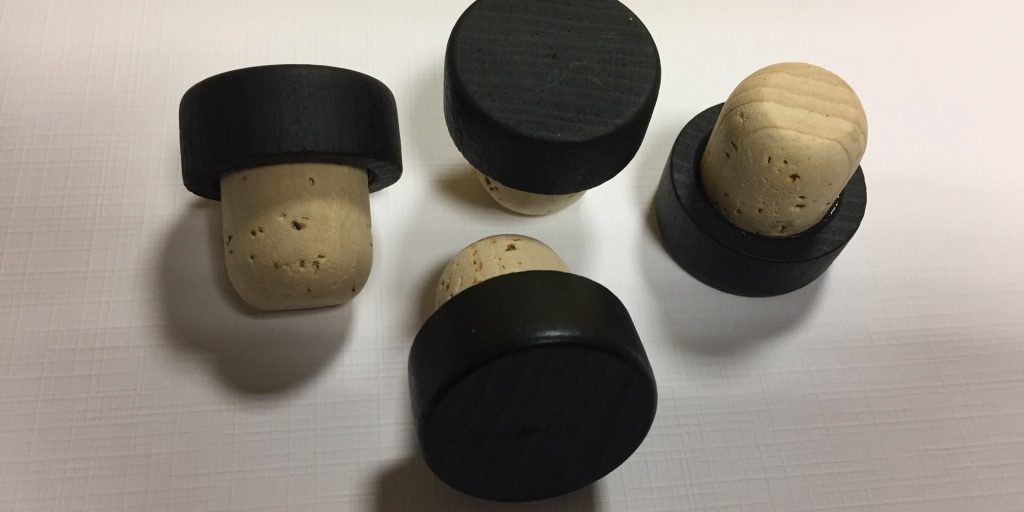Here we are going to consider the options of using micro-agglomerated cork or natural cork for bar-top stoppers. Micro-agglomerated cork is the most common option and is made by gluing small granules of cork together in a mould to produce a very highly consistent stopper using sophisticated moulding machinery. Natural corks are made from literally punching a cork cylinder out of a piece of cork bark and the process is much more artisan.
The first point you may wish to consider is the environmental aspects of the two different options. Natural cork is undoubtedly the most environmentally friendly option – the bark is removed from cork oak trees without killing the tree (the bark will regrow to be harvested again around 9 years later) and the final product is 100% organic and natural. Micro-agglomerated corks are clearly a much more environmentally friendly option than synthetic stoppers, but there is no getting round the fact that the polyurethane bonding agent used to glue the granules together is synthetic, so you should not refer to them as 100% organic.

Next you need to consider the elasticity of the two options – you get significantly better compression out of natural cork than micro-agglomerated cork, which means that you actually have to size micro-agglomerated corks larger for a given neck diameter than you would for natural cork (read more about sizing bar-top corks for different bottle sizes here). The extra elasticity of natural corks means that the cork will better follow the often inconsistent internal neck diameter of a bottle, which can give a better seal as well as making the cork easier to extract and insert. With lower quality natural corks you can have some issues with the seal if there is severe pitting in the surface of the cork, but really you should not be using a natural cork of lower quality than a second for a bar-top (here is an explanation of different cork qualities).

Distillers are of course rightly concerned about their cork stoppers colouring or giving an unwanted flavour to their product – given that the alcohol levels are high, a stopper (be it synthetic, micro-agglomerated or natural) can be degraded over time, so the cork industry has to offer a solution to this issue. When we produce micro-agglomerated or natural bar-top stoppers, we apply a specific surface treatment according to what will be bottled to protect the cork from the high strength alcohol, so it is important for us to know what you will be bottling. This surface treatment is extremely effective, but it is worth noting that lower quality natural corks will tend to have more darker markings on their surface and these markings are the most critical issue with transferring colour to the liquid. So using a good quality cork (especially for white spirits) is extremely important. Micro-agglomerated corks are easier to handle from this perspective although you do need to consider that the synthetic element in them will be in contact with high strength alcohol which can lead to some degradation (note that 100% synthetic stoppers also have to confront this issue as they can degrade badly over time).
The final issue to consider is the appearance of the cork – comparing agglomerated cork and natural cork is like comparing MDF and natural wood. MDF has a completely consistent appearance, but natural wood will have a grain to it and various surface ‘imperfections’, but these are what make natural wood beautiful! The same goes for cork – you need to choose between a homogeneous but slightly sterile appearance or something more organic and charming. If you are going to be marketing your spirit on the fact that you use natural ingredients, that you are environmentally friendly and that there is a direct relationship with the soil from which your product ultimately comes, then a natural cork will speak this message for you. A micro-agglomerated stopper is more about functionality (although of course it is a far more attractive and natural product than a synthetic stopper).
If you need some further guidance, please contact us for more information.







